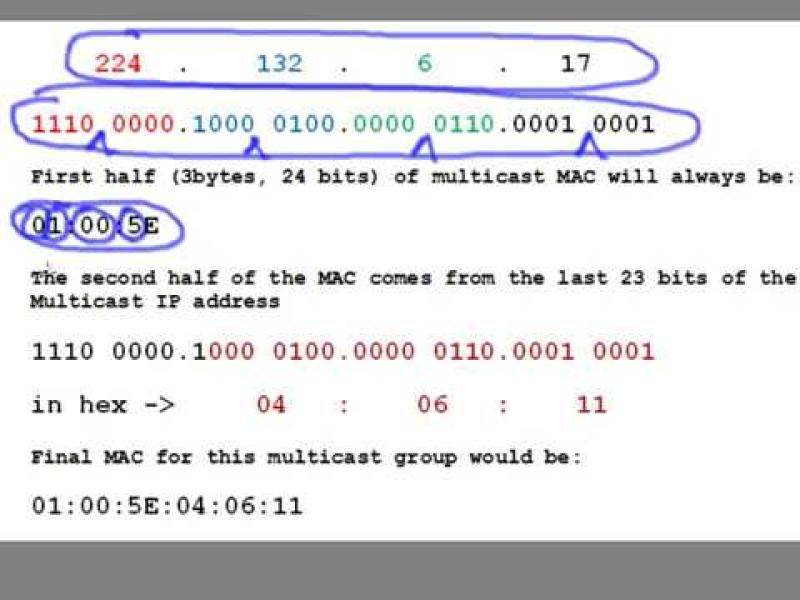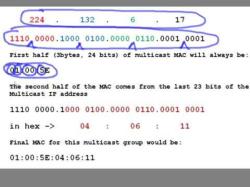How do I convert hex to IP address?
Converting hexadecimal (hex) to an IP address involves understanding the hexadecimal representation of each octet in the IP address. An IP address is a 32-bit numeric address written as four octets separated by periods (dots). Each octet is typically represented in decimal format, ranging from 0 to 255. In hex, each digit represents four binary bits, allowing for easy conversion between hex and binary.
Here's a step-by-step guide to convert a hex value to an IP address:
Example:
Let's convert the hex value 1A2B3C4D to an IP address.
Steps:
Split Hex Value:
- Divide the hex value into four groups of two digits each (representing each octet of the IP address):
1A,2B,3C,4D
- Divide the hex value into four groups of two digits each (representing each octet of the IP address):
Convert Hex to Binary:
- Convert each two-digit hex value to an 8-bit binary number:
1Ain binary is000110102Bin binary is001010113Cin binary is001111004Din binary is01001101
- Convert each two-digit hex value to an 8-bit binary number:
Combine Binary Values:
- Combine the binary values of all four octets to form a 32-bit binary number:
00011010 00101011 00111100 01001101
- Combine the binary values of all four octets to form a 32-bit binary number:
Convert Binary to Decimal:
- Convert the 32-bit binary number to decimal. Group the binary number into four sets of eight bits and convert each set to decimal:
00011010in decimal is2600101011in decimal is4300111100in decimal is6001001101in decimal is77
- Convert the 32-bit binary number to decimal. Group the binary number into four sets of eight bits and convert each set to decimal:
Write the IP Address:
- Write the decimal values as four octets separated by periods:
- The IP address is
26.43.60.77
- The IP address is
- Write the decimal values as four octets separated by periods:
So, the hex value 1A2B3C4D is equivalent to the IP address 26.43.60.77.
This conversion process is commonly used in networking, especially in scenarios like Network Address Translation (NAT) or when working with low-level network protocols.
How can I convert a Hexadecimal number to an IP address?
To convert a Hexadecimal number to an IP address, you can use the following steps:
- Split the Hexadecimal number into four octets: An IP address is made up of four octets, each of which is a decimal number between 0 and 255. To convert a Hexadecimal number to an IP address, you need to split the Hexadecimal number into four separate octets.
For example, if the Hexadecimal number is 0xAABBCCEE, you would split it into the following four octets:
- 0xAA
- 0xBB
- 0xCC
- 0xEE
- Convert each octet to decimal: Once you have split the Hexadecimal number into four octets, you need to convert each octet to decimal. To do this, you can use the following table:
| Hexadecimal Digit | Decimal Value |
|---|---|
| 0 | 0 |
| 1 | 1 |
| 2 | 2 |
| 3 | 3 |
| 4 | 4 |
| 5 | 5 |
| 6 | 6 |
| 7 | 7 |
| 8 | 8 |
| 9 | 9 |
| A | 10 |
| B | 11 |
| C | 12 |
| D | 13 |
| E | 14 |
| F | 15 |
For example, to convert the octet 0xAA to decimal, you would look up the value for A in the table. The value for A is 10, so the decimal equivalent of 0xAA is 170.
- Combine the decimal octets into an IP address: Once you have converted each octet to decimal, you can combine the four decimal octets into an IP address. The IP address will be written in the form XXX.XXX.XXX.XXX, where each X is a decimal number between 0 and 255.
For example, if the four decimal octets are 170, 187, 204, 238, then the IP address would be 170.187.204.238.
What is the relationship between Hex and IP addresses?
Hexadecimal and IP addresses are both ways of representing numbers. A Hexadecimal number is a base-16 number, while an IP address is a base-10 number. This means that a Hexadecimal number can represent a larger range of values than an IP address. However, IP addresses are more commonly used because they are easier for humans to read and understand.
Are there online converters or tools for Hex to IP address conversion?
Yes, there are many online converters and tools available for Hex to IP address conversion. These tools can be found by searching for "Hex to IP address converter" on a search engine.
What is the structure of an IP address and how does Hex conversion fit into it?
An IP address is a unique number that is assigned to each device on a computer network. It is used to identify and locate devices on the network. An IP address is made up of four octets, each of which is a decimal number between 0 and 255. The octets are separated by periods.
Hex conversion is used to convert a Hexadecimal number to an IP address because Hexadecimal numbers can represent a larger range of values than decimal numbers. This allows for more unique IP addresses to be created.
Are there specific protocols or standards governing Hex to IP address conversion?
Yes, there are specific protocols and standards governing Hex to IP address conversion. The most common protocol is the Internet Protocol (IP), which is the foundation of the Internet. The IP protocol defines the format of IP addresses and how they are used to route traffic on the Internet.
There are also a number of other standards that govern Hex to IP address conversion, such as the Address Resolution Protocol (ARP) and the Dynamic Host Configuration Protocol (DHCP). These protocols are used to assign IP addresses to devices on a network.




